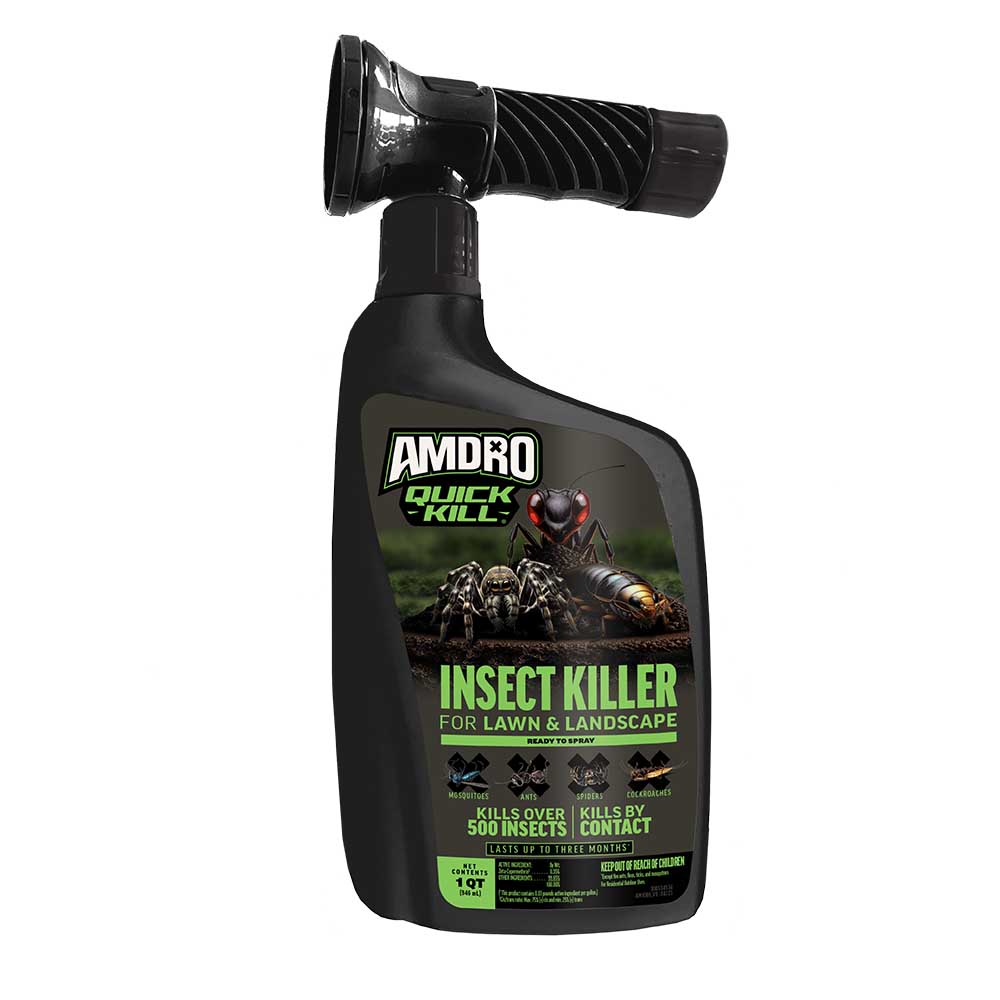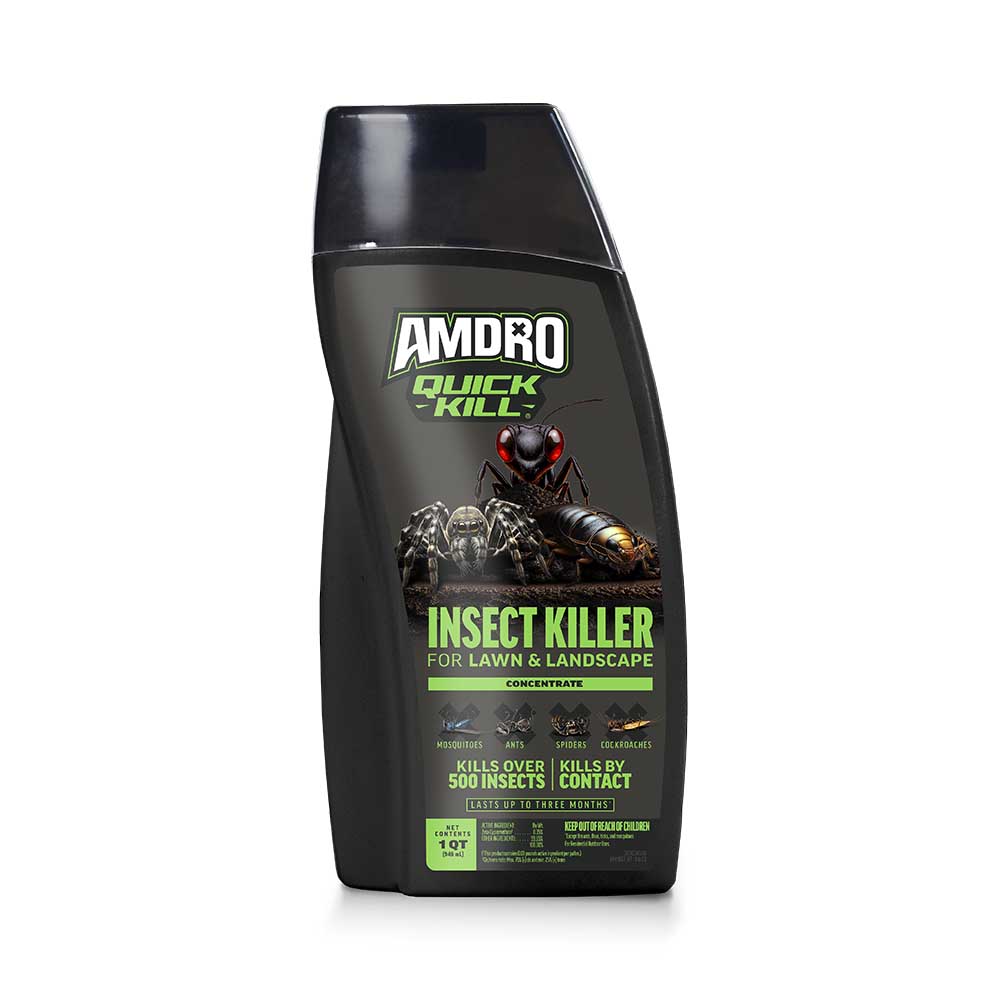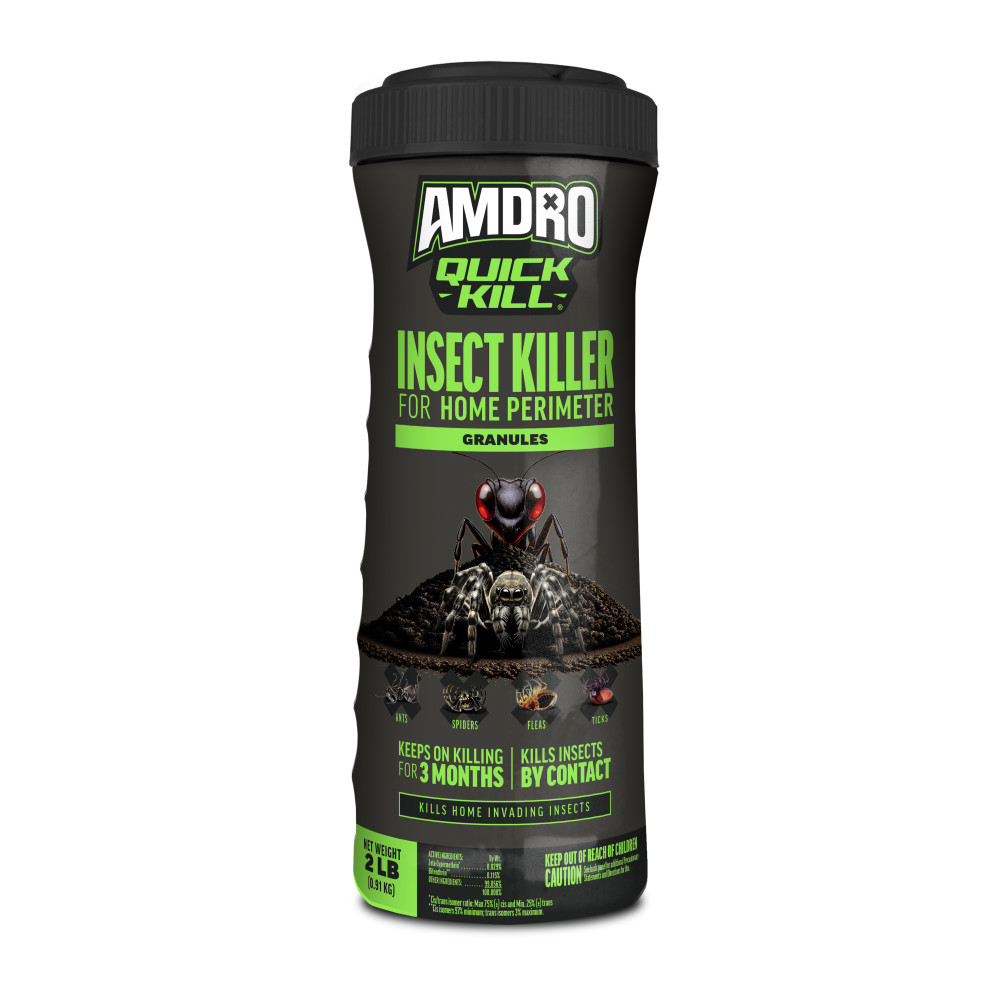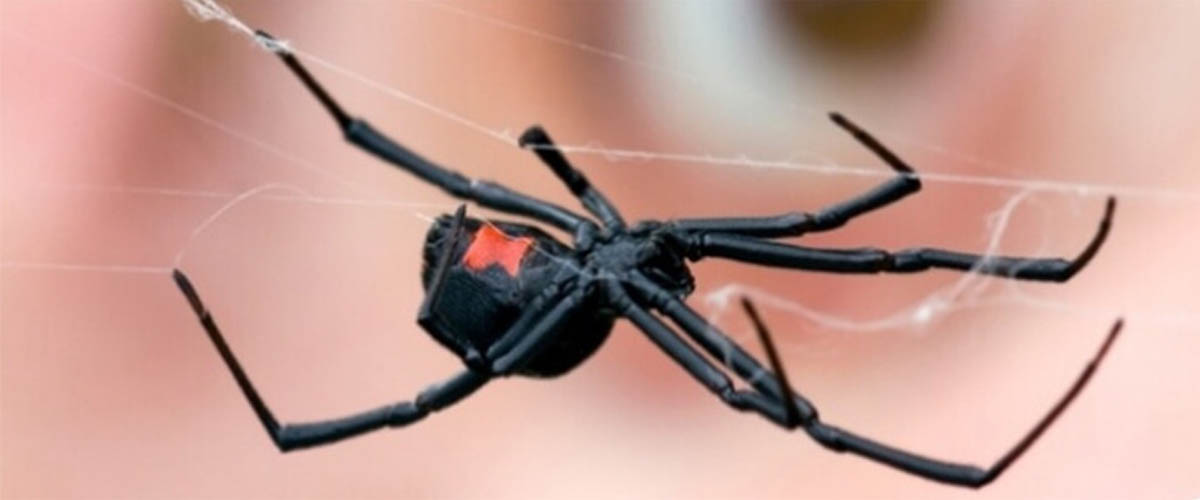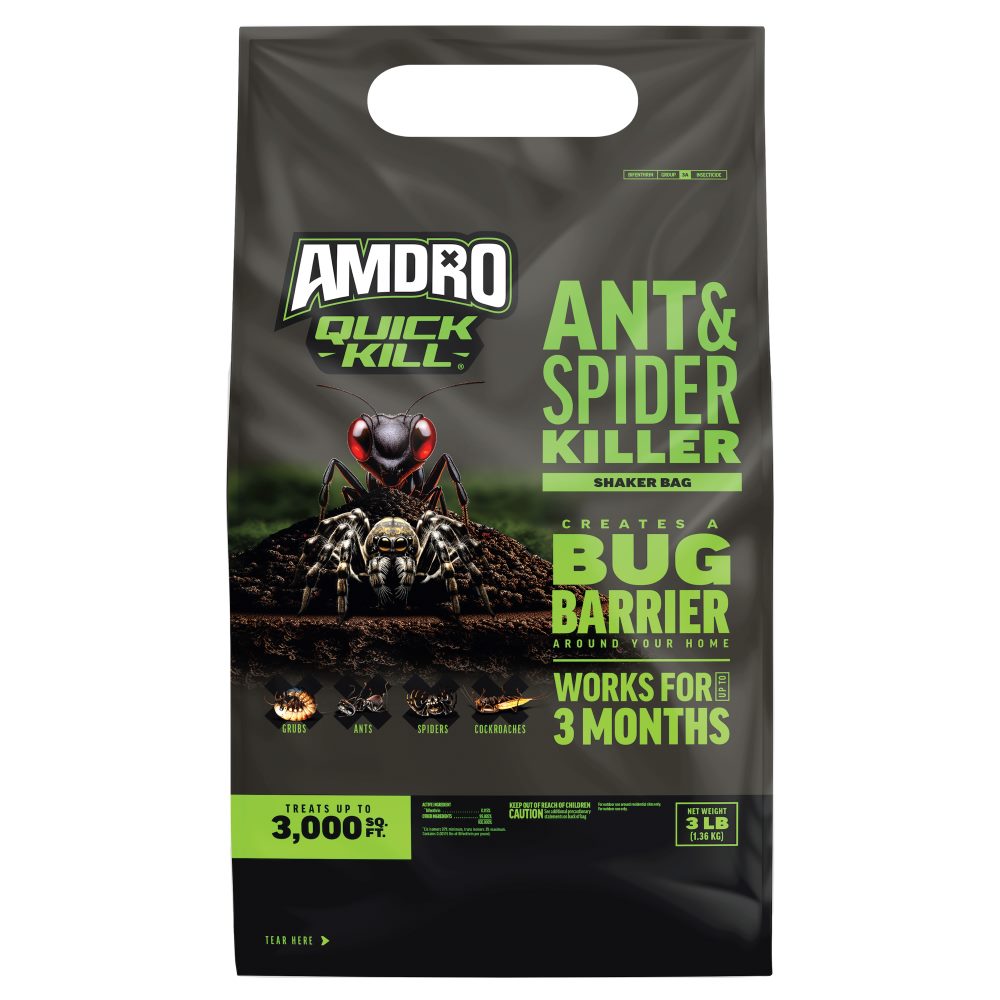

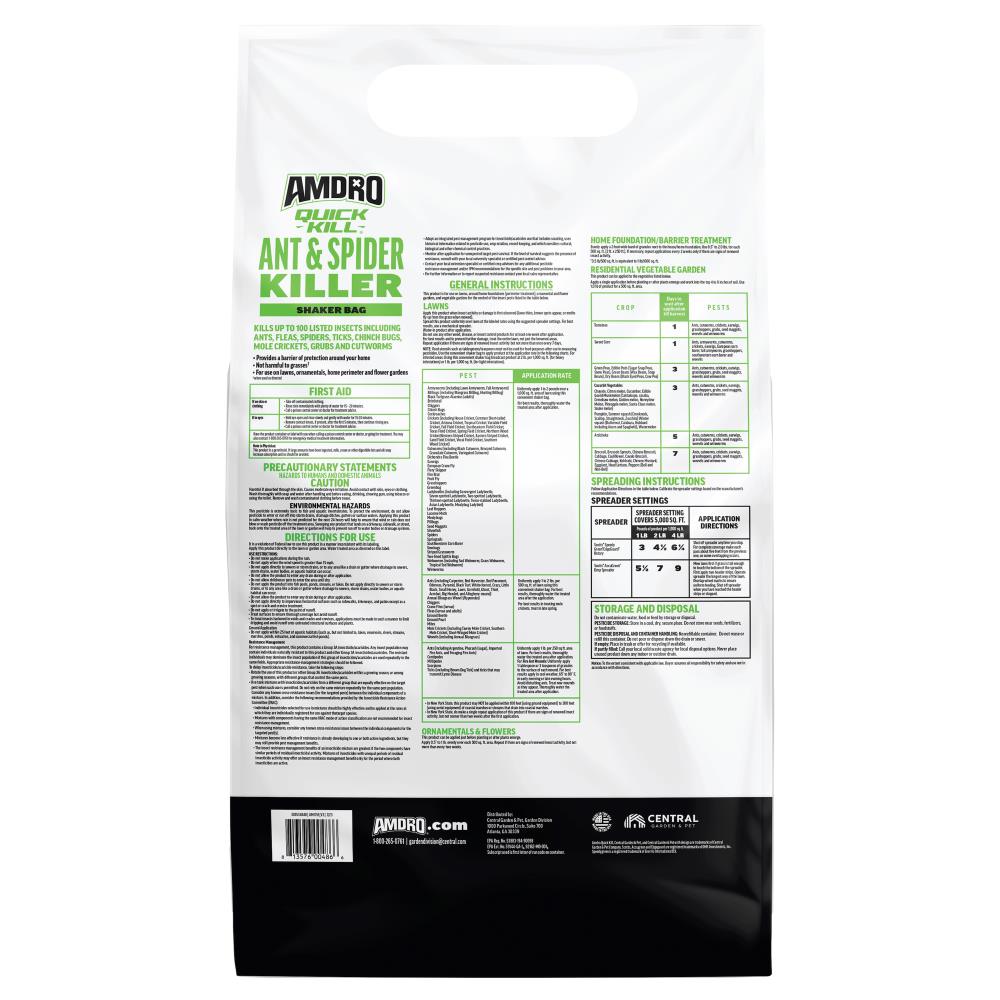
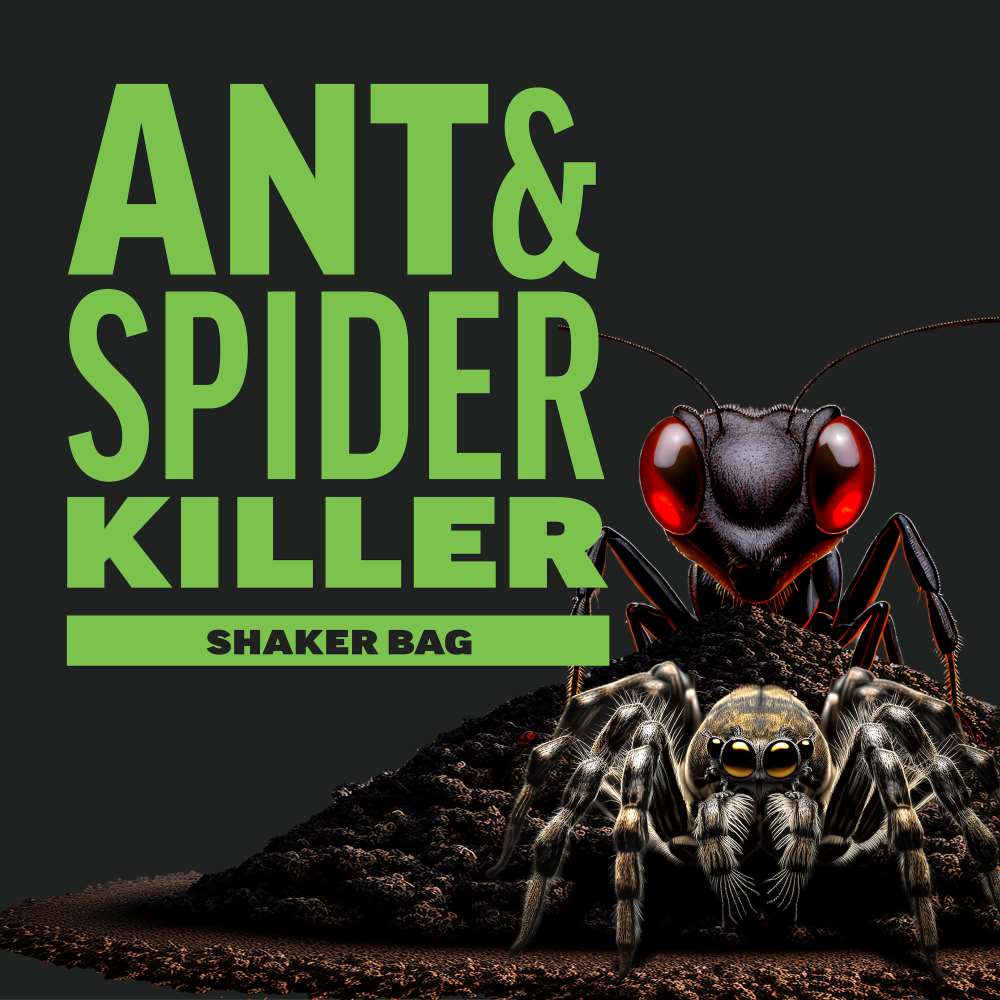
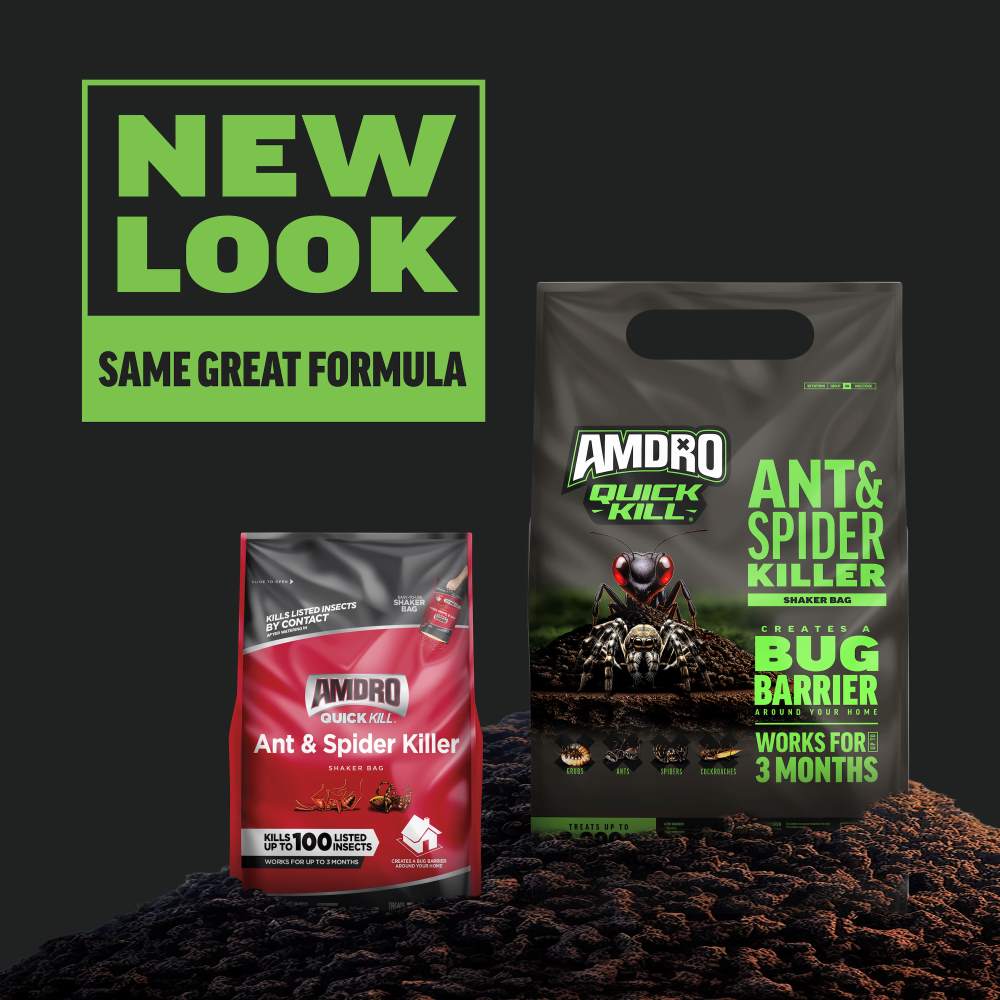
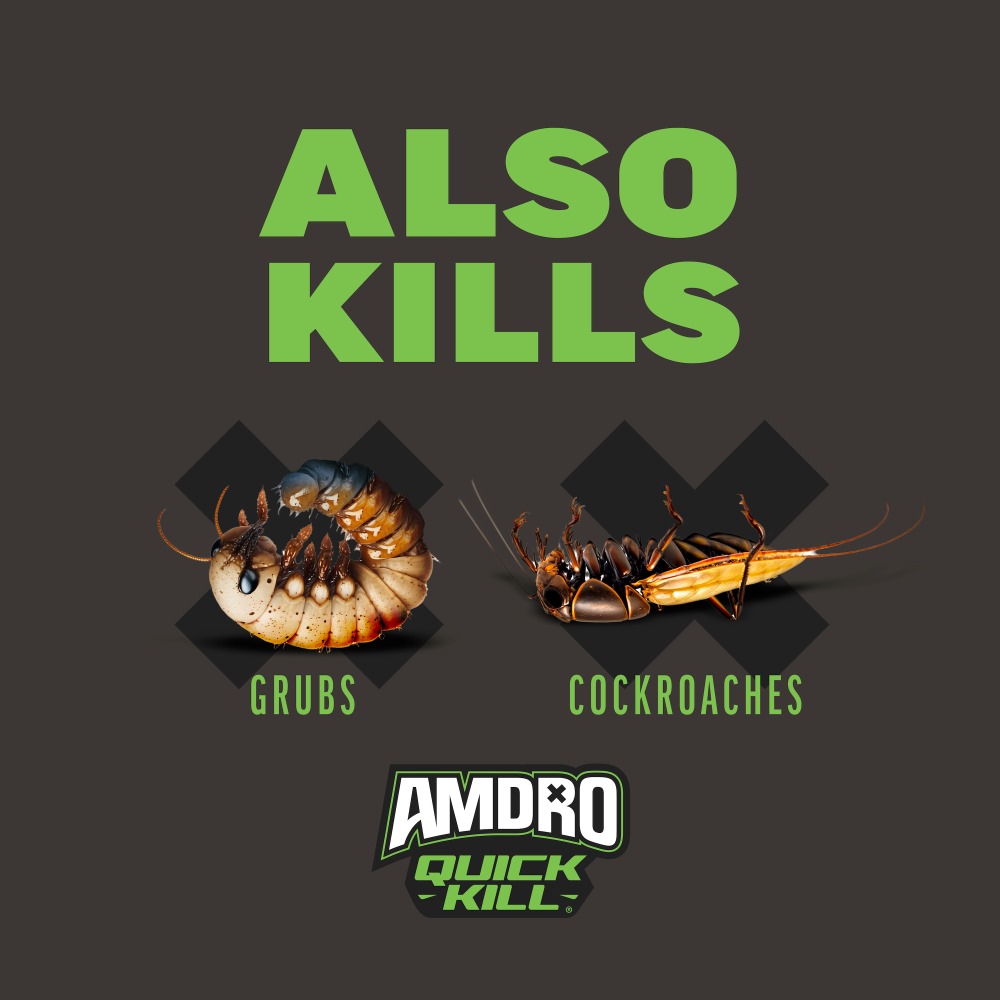
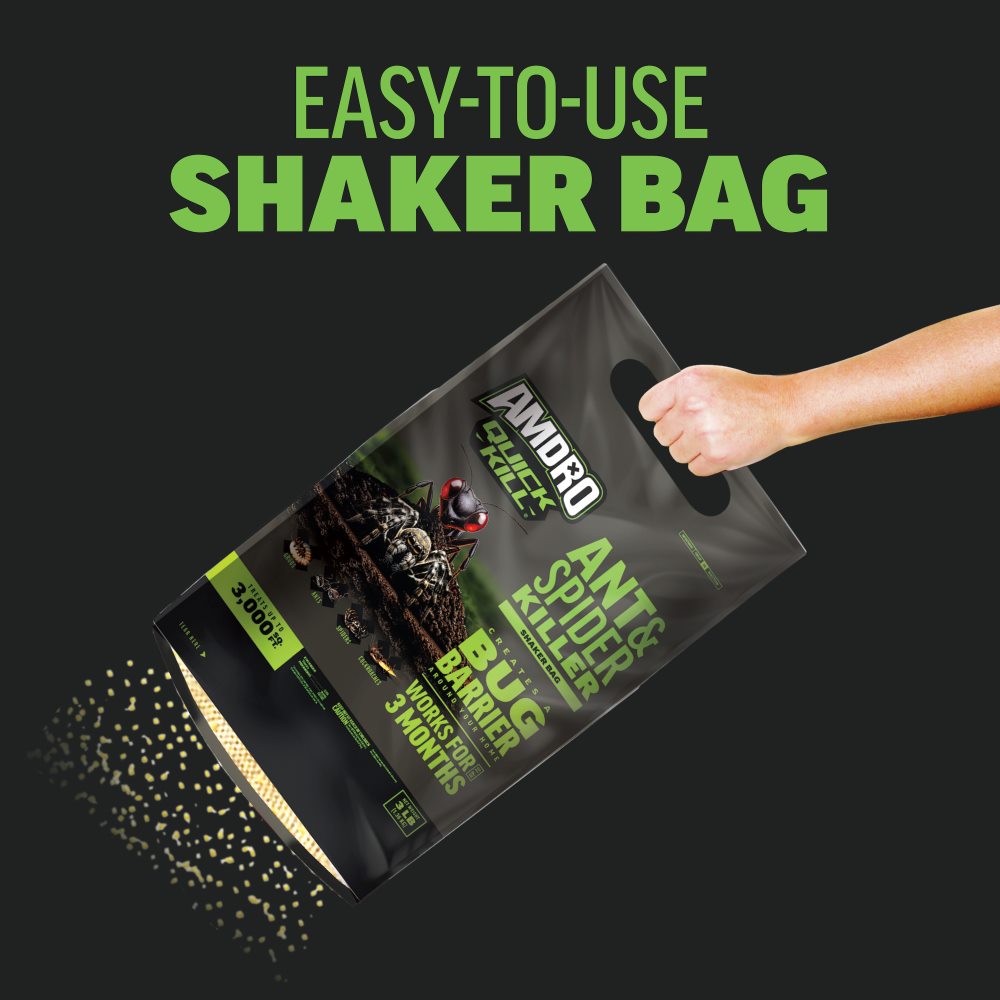
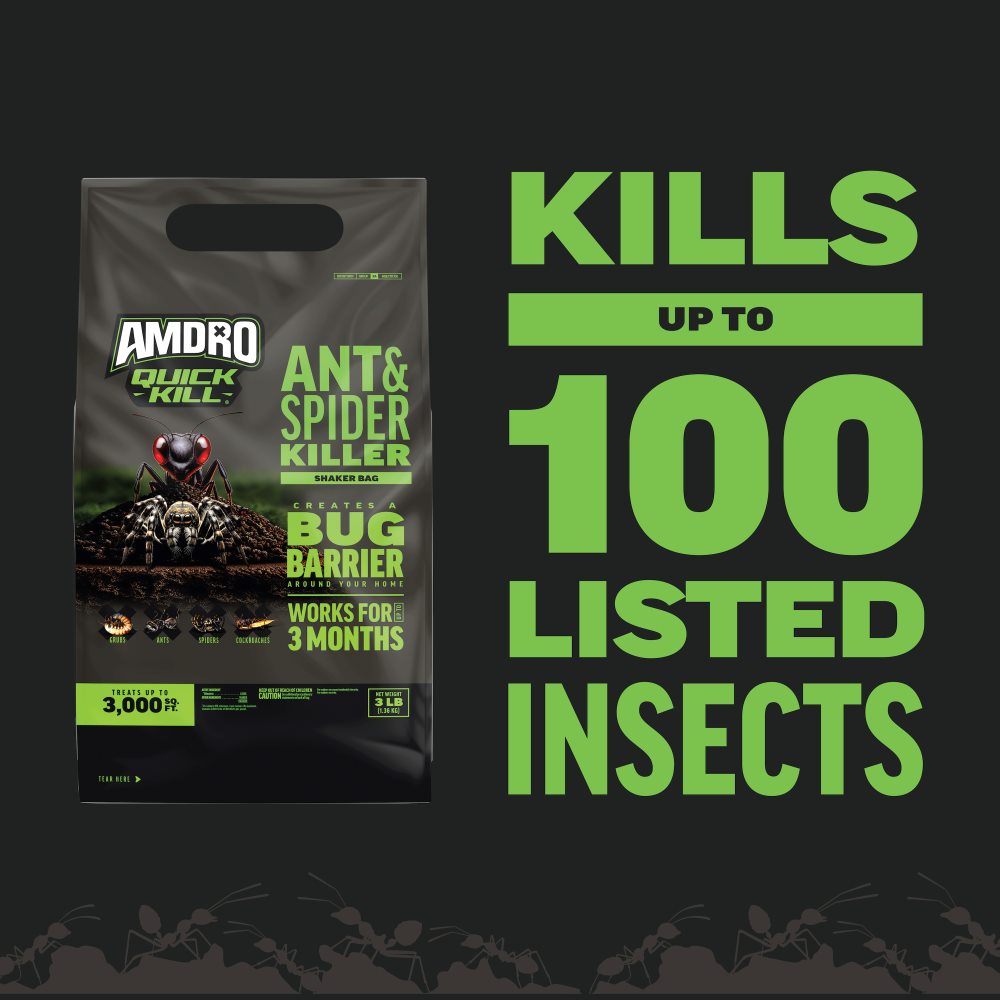
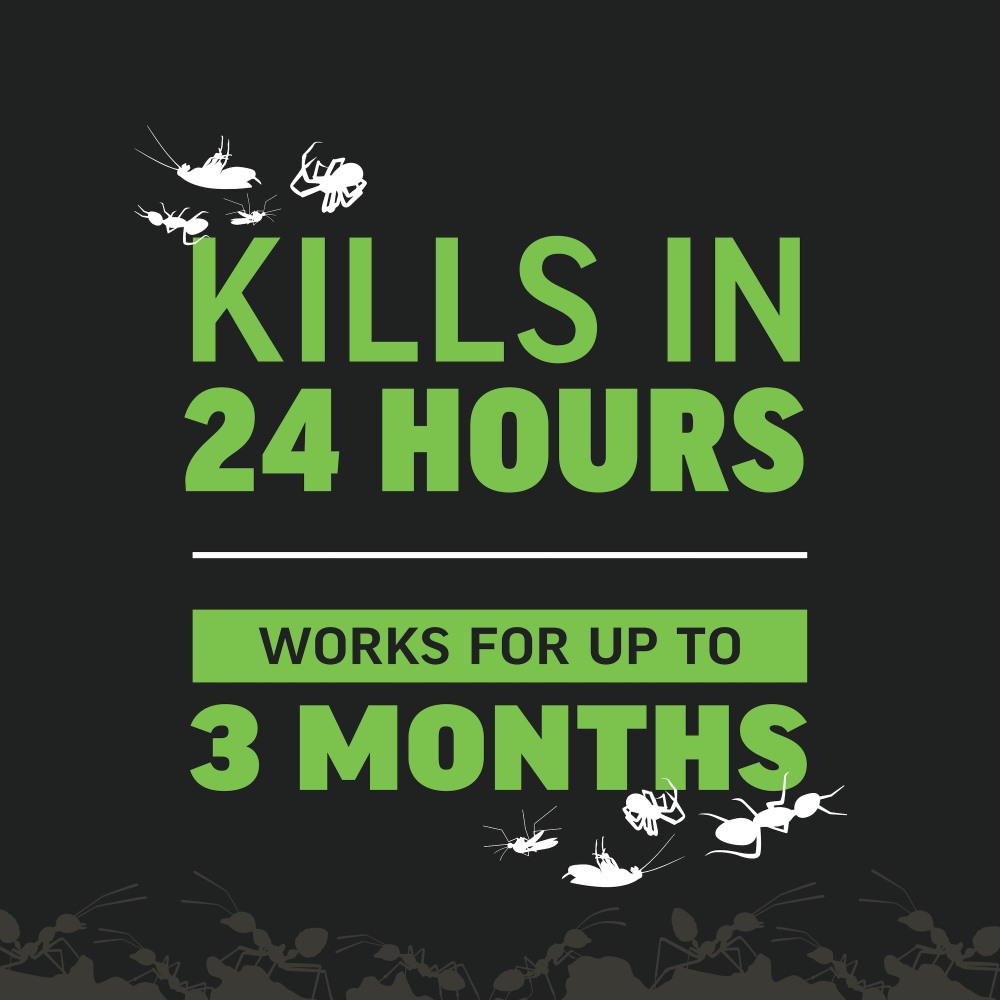
Amdro Quick Kill® Ant & Spider Killer Shaker Bag
Size:
Get back to enjoying your yard with this formula that keeps listed* insects away for up to 3 months. Amdro Quick Kill Ant & Spider Killer creates a bug barrier around your home. The granules come ready to spread. All you need to do is apply evenly with the easy-to-use shaker bag across your yard or home perimeter and lightly water the treated area to kill and control up to 100 listed insects. After application, this product kills listed pests by contact and works for up to 3 months. The soil-penetrating formula targets lawn damaging insects like grubs and mole crickets that live below the surface. It also kills surface insects such as ants, spiders, cockroaches, fleas, ticks and more. Amdro Quick Kill Ant & Spider Killer comes in a 3lb shaker bag that covers up to 3,000 square feet. Lawn Insect Killer. Since 1980, Amdro has been providing pest control products for ants, spiders, cockroaches, grubs, mosquitoes, carpenter bees and many more. With our tested formulas, you can feel confident your pest problem is handled and get back to your life. *Please refer to insect lists found in the Direction for Use.
- PROTECT YOUR YARD FROM LISTED PESTS with Amdro Quick Kill Ant & Spider Killer Shaker Bag. This product works for up to 3 months.
- READY TO SPREAD, EASY-TO-USE INSECT CONTROL. Spread uniformly over targeted area and water-in after application to kill listed* insects, fleas,and ticks.
- SOIL-PENETRATING FORMULA kills lawn-damaging insects like grubs and mole crickets below the surface. Also kills surface insects like ants, spiders, fleas and ticks.
- CREATE A BUG-BARRIER around your home with easy-to-spread granules. This 3 LB bag will cover up to 3,000 square feet.
- KILLS BY CONTACT, WON’T HARM LAWNS, flower gardens, trees and shrubs. (When used as directed.)
- A TRUSTED PARTNER IN PEST CONTROL SINCE 1980. Count on Amdro for highly effective solutions to your pest control needs.
Ants, Spiders, Armyworms, Cockroaches, Chinch bugs, Crickets, Cutworms, Ticks, Silverfish, and other bugs listed on the product label
View All Targeted Pests
Uniformly apply 1 to 2 lbs of product over a 1,000 square feet area
FAQ
Does this product kill fire ants?
Yes, but only when fire ants come into contact with the granules. For long lasting fire ant control, we recommend using Amdro Fire Ant Bait granules for mound treatment or Amdro Fire Ant Yard Treatment granules for broadcast treatment across your yard.
Does this product kill argentine ants?
Yes, but only when argentine ants come into contact with the granules. For long lasting ant control, we recommend using Amdro Ant Block Home Perimeter Ant Bait granules.
Does this work on crickets and roaches outdoors?
Yes, it does. Please refer to the label for use rate and application instructions for control.
VIEW ALL TARGETED PESTS
Ants (including Argentine, Pharaoh (sugar), Imported Fire Ants, and Foraging Fire Ants, Carpenter, Red Harvester, Red Pavement, Odorous, Pyramid, Black Turf, White-footed, Crazy, Little Black, Small Honey, Lawn, Cornfield, Ghost, Thief, Acrobat, Big-Headed, and Allegheny mound), Armyworms (including Lawn Armyworm, Fall Armyworm), Billbugs (including Bluegrass Billbug, Hunting Billbug), Black Turfgrass Ataenius (adults), Bristletail, Chiggers, Chinch Bugs, Centipedes, Millipedes, Scorpions, Ticks (including Brown Dog Tick) and ticks that may transmit Lyme Disease, Cockroaches, Crickets (including House Cricket, Common Short-tailed Cricket, Arizona Cricket, Tropical Cricket, Variable Field Cricket, Fall Field Cricket, Southeastern Field Cricket, Texas Field Cricket, Spring Field Cricket, Northern Wood Cricket, Western Striped Cricket, Eastern Striped Cricket, Sand Field Cricket, Vocal Field Cricket, Southern Wood Cricket), Cutworms (including Black Cutworm, Bronzed Cutworm, Granulate Cutworm, Variegated Cutworm), Dichondra Flea Beetle, Earwigs, European Crane Fly, Fiery Skipper, Fire Brat, Fruit Fly,, Grasshoppers, Greenbug, Ladybeetles (including Convergent Ladybeetle, Seven-spotted Ladybeetle, Two-spotted Ladybeetle, Thirteen-spotted, Ladybeetle, Twice-stabbed Ladybeetle, Asian Ladybeetle, Mealybug Ladybird), Leaf Hoppers, Lucerne Moth, Mealybugs, Pillbugs, Seed Maggots, Silverfish, Spiders, Springtails, Southwestern Corn Borer, Sowbugs, Striped Grassworm, Two-lined Spittle Bugs, Webworms (including Sod Webworm, Grass Webworm, Tropical Sod Webworm), Wireworms, Annual Bluegrass Weevil (Hyperodes), Chiggers, Crane Flies (larvae), Fleas (larvae and adults), Ground Beetle, Ground Pearl, Mites, Mole Crickets (including Tawny Mole Cricket, Southern Mole Cricket, ShortWinged Mole Cricket), Weevils (including Annual Bluegrass)
*Aids in control
